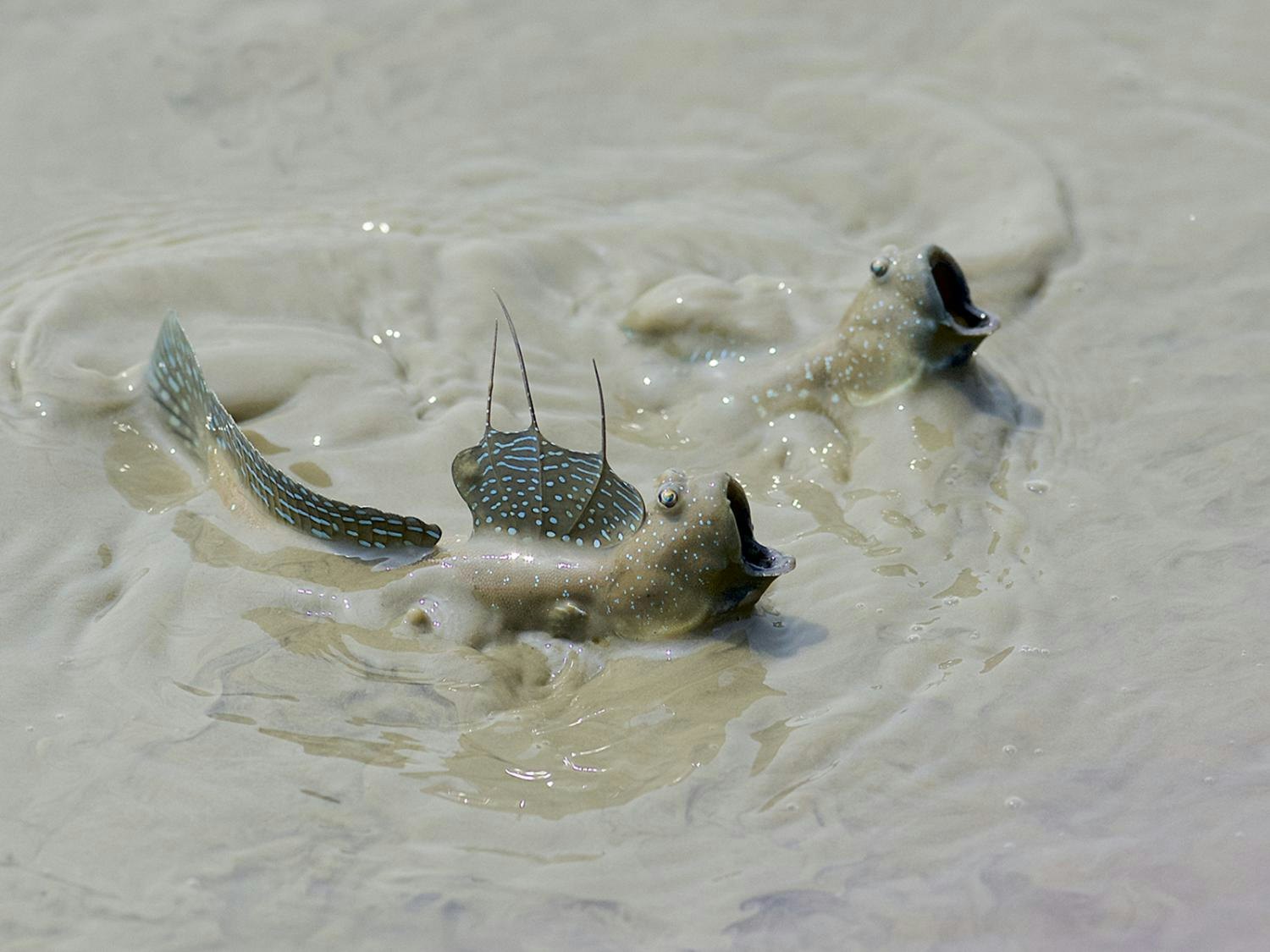
Chances are you’ve blinked at least a dozen times in the past minute, whether you’ve realized it or not. We rarely give a fleeting thought to this automatic behavior — not just for us but for most other animals that live on land, too.
Blinking is a necessity for all mammals, birds, amphibians, and reptiles, providing the eyes with consistent moisture and protection from debris. But under the sea, fish and other marine life don’t need to blink as we do, thanks to the constant flow of water.
At some point in evolutionary history, the first animals to leave the oceans and wander onto shore would have had to figure out how to blink. Researchers writing today in the journal Proceedings of the National Academy of Sciences now have a better understanding of how the first blinking creatures evolved, thanks to the unusual anatomy of an animal living today.
Best of both worlds
Mudskippers are one of the few fish that can survive outside of water for extended periods of time thanks to their amphibian-like adaptations.
Their stubby fins double as legs to propel them over muddy landscapes. And their elongated bodies can serve as powerful springboards to launch themselves into the air, an act often seen during mating displays.
Being able to thrive on both land and at sea makes the mudskipper comparable to the first tetrapods — limbed, land-dwelling vertebrates — that crawled from the oceans 375 million years ago. In fact, some fossils from the Devonian Period, when the first sea creatures evolved limbs, look quite reminiscent of the mudskipper.

While paleontologists have uncovered the skeletons of many early tetrapods, little is known about their blinking abilities. That’s because soft tissue is rarely preserved over the course of millions of years, rendering most prehistoric eyeballs and eyelids lost to the sands of time.
But by studying mudskippers, the researchers of the new study say that there’s an opportunity to understand how tetrapods may have evolved to blink millions of years ago in a separate yet similar way.
“The mudskipper, which evolved its blinking behavior independently, gives us the opportunity to test how and why blinking might have evolved in a living fish that regularly leaves the water to spend time on land,” Thomas Stewart, a professor of biology at Penn State and an author of the new study, said in a statement.
Watch and learn
For the study, the researchers investigated when, how, and why mudskippers blink. They took high-speed videos and CT scans of two species, the Indian mudskipper Periophthalmodon septemradiatus and the African mudskipper Periophthalmus barbarus.
Both species blink similarly by retracting their bulging eyes into their heads and allowing a membrane called a dermal cup to cover the cornea. It looks a lot different than the way humans blink: our upper eyelids lower, and tear glands secrete a small amount of liquid to protect the cornea.
It turns out that the mudskippers almost exclusively blinked while on land. On rare occasions where they blinked underwater, it was only because the mudskippers bumped their heads against the water filter in their tank or collided with one of their peers.
When placed in dry environments, the mudskippers blinked more often, showing that the behavior helped keep their eyes moist. But they appear to rely on a different mechanism than we do in order to moisturize.
Tear glands are common in land-dwelling animals, but the researchers weren’t sure if the mudskipper had them, too. If not, how else could the fish keep its eyes wet while out of water?
“Whereas our tears are made by glands around our eyes and on our eyelids, mudskippers seem to be mixing mucus from the skin with water from their environment to produce a tear film,” explained study author and biology professor Brett Aiello of Seton Hill University in a statement.
And compared to the closely-related goby, a fish that does not blink or spend time out of the water, the mudskipper’s eye anatomy was surprisingly similar.
Rather than evolving new glands, the mudskipper appears to have rearranged its muscles in order to pop its eyes in and out, hinting that ancient tetrapods may have evolved in a similar way.
The mudskipper appears to have rearranged its muscles in order to pop its eyes in and out.
Evolutionary benefit
Some fossil evidence suggests the eyes of early tetrapods may have retracted into their heads like the mudskipper. In the bones of the four-legged tetrapod Acanthostega gunnari, for example, researchers have reconstructed the possible existence of muscles that could control this type of movement.
And because rearranging eye muscles is a lot simpler than evolving tear glands, the researchers argue that early tetrapods likely learned to utilize their existing anatomy to develop the earliest forms of blinking.
“This is a very interesting result because it shows that a very rudimentary, or basic, system can be used to conduct a complex behavior,” Aiello said in a statement. “You don’t need to evolve a lot of new stuff to evolve this new behavior — mudskippers just started using what they already had in a different way.”
Nowadays, animals have developed a wide variety of ways to blink. Eyelids, multiple membranes, and glands all came with time. But it was up to the first tetrapods to figure out how to blink with the anatomy they had as they waded out of the water and into the unknown.







